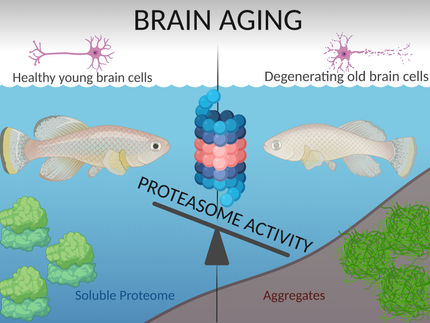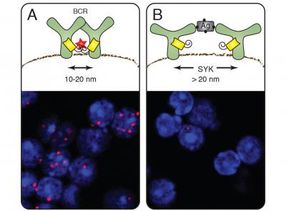Criminal minds in dementia
Studies indicate that larger atrophy in the temporal lobe is linked to criminal behavior in individuals with frontotemporal dementia, suggesting a loss of normal behavioral restraints
Advertisement
neurodegenerative diseases might affect several functions of the brain, ranging from memory in Alzheimer’s disease to behavior, such as in behavioral variant frontotemporal dementia, and to sensorimotor function in Parkinson’s disease. If persons violate social or legal norms due to changes in behavior, personality and cognition, these incidents may have a substantial impact on this person’s family and social surroundings and may lead to prosecution. Matthias Schroeter and Lena Szabo from MPI CBS investigated this problem in a broad meta-analysis that included 14 studies with 236,360 persons from different countries (U.S.A., Sweden and Finland, Germany and Japan).
A suspected perpetrator who can barely remember his name, several traffic violations committed by a woman in her mid-fifties who is completely unreasonable and doesn’t understand her behaviour – should such cases be brought before a court? And how does the state deal with people who commit acts of violence without meaning to? Those questions come to mind if one hears those examples from everyday clinical praxis with persons suffering from dementia. Neurodegenerative diseases might affect several functions of the brain, ranging from memory in Alzheimer’s disease to behavior, such as in behavioral variant frontotemporal dementia, and to sensorimotor function in Parkinson’s disease. One of the most interesting consequences of these alterations is the fact that persons affected by these diseases might develop criminal risk behavior like harassment, traffic violation, theft or even behavior causing harm to other people or animals, even as the first disease sign. If persons violate social or legal norms due to changes in behavior, personality and cognition, these incidents may have a substantial impact on this person’s family and social surroundings and may lead to prosecution. Matthias Schroeter and Lena Szabo from MPI CBS investigated this problem in a broad meta-analysis that included 14 studies with 236,360 persons from different countries (U.S.A., Sweden and Finland, Germany and Japan).
Their systematic literature review revealed that criminal risk behavior prevalence is more frequent in early disease course than in the general population, but declines thereafter below population levels. Therefore, criminal behavior committed for the first time at mid-age could be an indicator of incident dementia, requiring earliest diagnosis and therapy.
“We wanted to raise awareness of this problem with the meta-analysis, which is the first one systematically and quantitatively investigating potential criminal behavior in dementia syndromes. Our hope is that it would help better understanding possible implications of such diseases, identifying possible reasons, and encouraging interdisciplinary endeavors to develop coping strategies.”, says Matthias Schroeter, first author of the study.
The team shows that prevalence of criminal risk behaviors was highest in behavioral variant frontotemporal dementia (>50%), followed by semantic variant primary progressive aphasia (40%), but rather low in vascular dementia and Huntington’s disease (15%), Alzheimer’s disease (10%), and lowest in Parkinsonian syndromes (<10%).
“Criminal risk behavior in frontotemporal dementia is most likely caused by the neurodegenerative disease itself. Most of the patients showed criminal risk behavior for the first time in their life and had no previous records of criminal activity.”, explains Matthias Schroeter, leader of the research group “Cognitive Neuropsychiatry” at MPI CBS. “The prevalence seems to be more frequent in frontotemporal dementia and Alzheimer’s disease in early disease course than in the general population before diagnosis, presumably in prestages such as mild behavioral or cognitive impairment, but declines thereafter finally leading to lower prevalence in dementia after diagnosis if compared with the general population. We also found that criminal risk behavior is more frequent in men than in women in dementia. After diagnosis, men showed four times more criminal risk behavior than women in frontotemporal dementia and seven times more in Alzheimer’s disease.”
In a second study the working group also identified the changes in the brain, that are associated with criminal behavior in frontotemporal dementia (Mueller et al. 2025). Persons exhibiting criminal behavior showed larger atrophy in the temporal lobe, indicating that criminal behavior might be caused by so called disinhibition, i.e., the loss of normal restraints or inhibitions, leading to a reduced ability to regulate one's behavior, impulses, and emotions. Disinhibition can manifest as acting impulsively, without thinking through the consequences, and behaving in ways that are inappropriate for the situation.
Although these findings are interesting, they should not be overestimated. “One has to prevent a further stigmatization of persons with dementia. Of note, most offences committed were minor such as indecent behavior, traffic violations, theft, damage to property, but also physical violence or aggression occurred. Hence, sensitivity for this topic as possible early signs of dementia and earliest diagnosis and treatment are of uttermost importance. Beside early diagnosis and treatment of persons affected one has to discuss adaptations of the legal system, such as increasing awareness of offences due to those diseases, and taking into account diseases in respective penalties and in jails.”, Matthias Schroeter concludes.



























































